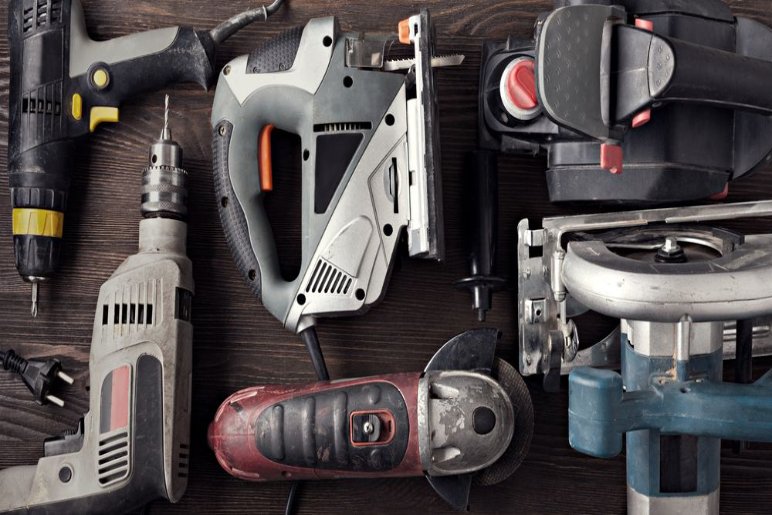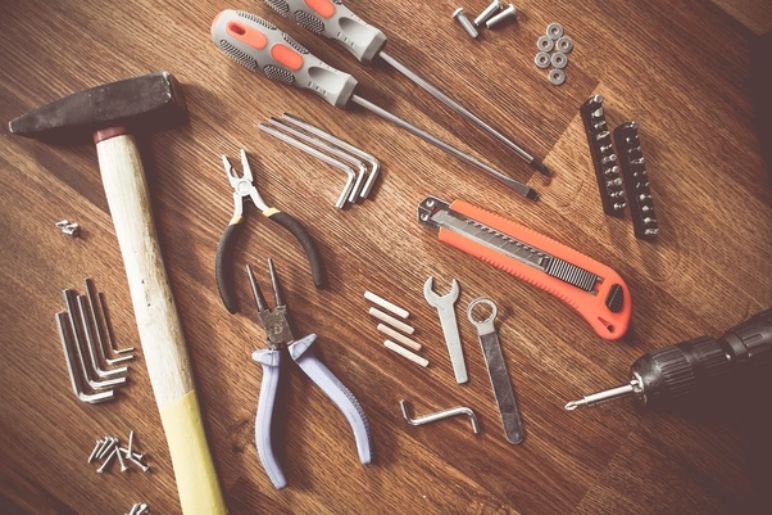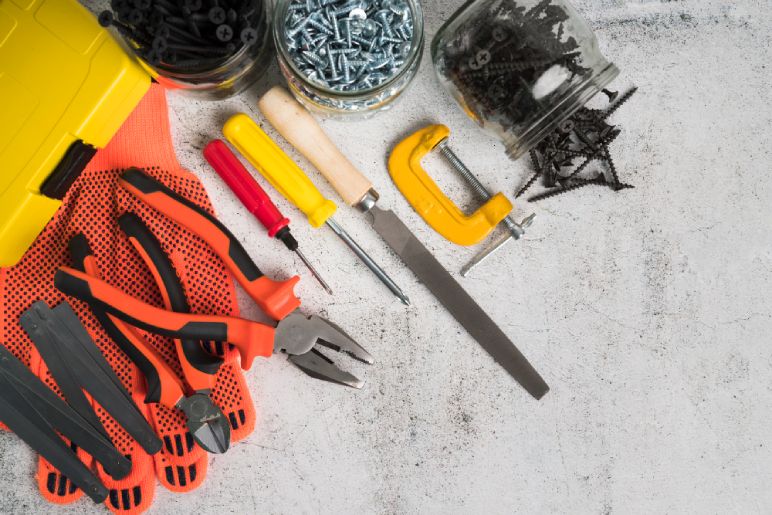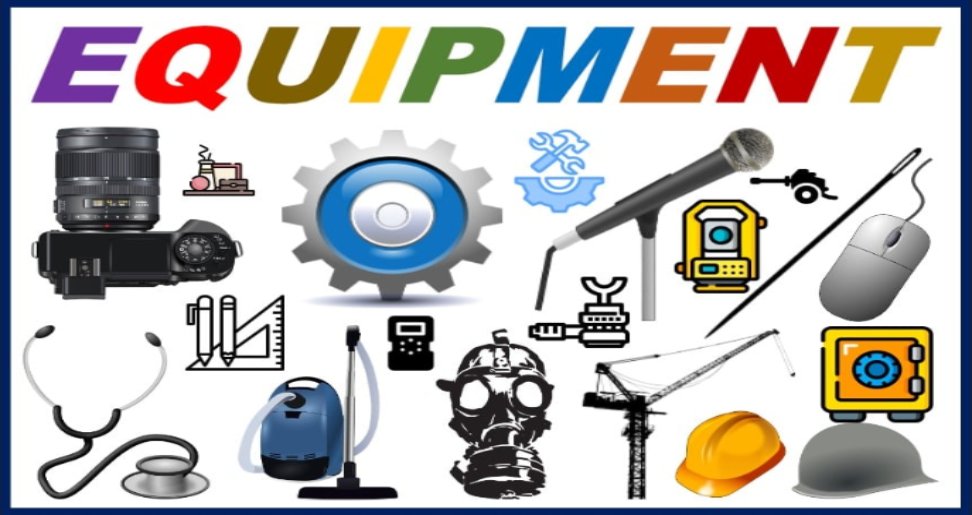In its broadest sense, equipment refers to any item or set of items used to accomplish a specific task or goal. It can range from simple tools to complex machinery. Whether it’s a hammer, a computer, or a spacecraft, equipment plays a pivotal role in shaping our world.
Equipment – an uncountable noun

Equipment, a collective noun, refers to a set of items used for a particular purpose or activity. Unlike countable nouns, it cannot be pluralized. While we can say “two books” or “three pens,” we cannot say “three equipments.” Instead, we use phrases like “pieces of equipment” or “items of equipment.” For example, “The construction site has a lot of heavy equipment.” Equipment can encompass a wide range of items, from tools and machinery to gadgets and supplies.
- Uncountable nouns have no plural form
Uncountable nouns, also known as mass nouns, are nouns that cannot be counted individually. They represent substances, concepts, or qualities that are considered whole entities rather than separate items. These nouns typically do not have a plural form. For example, “water” is an uncountable noun because it cannot be counted as individual units. Similarly, “happiness” is a concept that cannot be counted. While some languages may have plural forms for certain uncountable nouns, in English, they generally remain singular, even when referring to quantities. To express quantity with uncountable nouns, we use words like “much,” “little,” or “a lot of.”
Examples of where we can find equipment

- Manufacturing: Manufacturing is the process of transforming raw materials into finished products, often involving the use of machinery and technology. It encompasses a wide range of industries, from large-scale production of automobiles and electronics to smaller-scale crafts and artisanal goods. Manufacturing plays a crucial role in economic development, providing jobs, generating revenue, and driving innovation. It can be categorized into various types, such as discrete manufacturing (producing individual items like cars or appliances) and process manufacturing (creating continuous products like chemicals or oil). Factors influencing manufacturing include labor costs, infrastructure, technology, and market demand. Effective manufacturing practices often involve lean principles to minimize waste, improve efficiency, and enhance quality.
- Sports: Sports are physical activities that are often competitive and involve rules and strategies. They can be played individually or as a team, and can range from simple games to complex professional leagues. Sports can provide physical and mental health benefits, such as improved cardiovascular health, increased strength and flexibility, and reduced stress. They can also foster teamwork, discipline, and a sense of accomplishment. Sports have played a significant role in human culture for centuries, and continue to be popular and widely enjoyed around the world.
- Business: Business is a fundamental human activity that involves the creation, production, and exchange of goods and services for profit. It encompasses a wide range of activities, from small-scale enterprises to multinational corporations. Businesses play a vital role in economic growth, job creation, and innovation. They are driven by various motivations, including profit maximization, social impact, and personal fulfillment. Successful businesses often possess strong leadership, effective management, and a deep understanding of their target market. They continuously adapt to changing market conditions, technological advancements, and consumer preferences to remain competitive and sustainable.
- Labs, research, medical centers: Labs, research centers, and medical centers are essential components of modern society, serving as hubs for scientific exploration, technological advancement, and healthcare provision. Labs provide controlled environments for conducting experiments and investigations, enabling scientists to study various phenomena and develop innovative solutions. Research centers focus on specific areas of inquiry, such as medicine, engineering, or the humanities, and often collaborate with universities, government agencies, and private industries to advance knowledge and address societal challenges. Medical centers, on the other hand, are dedicated to providing comprehensive healthcare services, including diagnosis, treatment, and rehabilitation. They house state-of-the-art equipment, employ skilled medical professionals, and often serve as teaching hospitals, training future generations of healthcare providers. Together, labs, research centers, and medical centers play a crucial role in driving progress, improving quality of life, and shaping the future.
- Military: A military is a well-organized force equipped with weapons and trained for combat. It is primarily responsible for defending a nation’s sovereignty and territorial integrity. Military forces can vary widely in size, structure, and equipment, but they typically include branches such as the army, navy, air force, and marines. These branches collaborate to execute military operations, which can range from peacekeeping missions to full-scale wars. Military personnel are trained in a variety of skills, including combat tactics, weapons handling, first aid, and leadership. They are often subject to strict discipline and follow a hierarchical command structure. Military forces play a significant role in shaping global events and can have a profound impact on societies around the world.
Etymology (origin) of the term ‘Equipment’

The term “equipment” is derived from the Latin word “aequare,” meaning “to make equal.” This root suggests that the concept of equipment implies a state of being prepared or equipped to perform a task or function effectively. The notion of equalization or balance is central to the idea of equipment, as it implies that the necessary tools, resources, or materials are available in sufficient quantity and quality to ensure a level playing field or a fair outcome. Over time, the meaning of “equipment” has expanded to encompass a broader range of objects and materials that are used to support or facilitate various activities, from household items to specialized tools for professional use.
The Evolution of Equipment
The history of equipment is intertwined with the history of human civilization. From the stone tools of our ancestors to the sophisticated technology of today, equipment has evolved at an astonishing pace.
- Early Civilizations: The dawn of human civilization marked a pivotal moment in history, characterized by the emergence of complex societies with advanced agriculture, urban centers, and organized social structures. These early civilizations, often located near fertile river valleys, developed sophisticated systems of governance, religion, and trade. Mesopotamian cities like Sumer and Babylon, along with ancient Egypt along the Nile, were pioneers in these early civilizations. They invented writing systems, developed intricate calendars, and made significant advancements in mathematics, astronomy, and medicine. These early civilizations laid the foundation for the cultural, intellectual, and technological advancements that would shape the course of human history.
- Industrial Revolution: The Industrial Revolution marked a transformative period in human history, characterized by a rapid shift from agrarian economies to industrial ones. This revolution was fueled by technological advancements, such as the steam engine, which enabled the mechanization of production processes. As a result, factories emerged, and large-scale manufacturing became the norm. The Industrial Revolution led to significant economic growth and urbanization, as people migrated from rural areas to cities in search of work. However, it also brought about social and environmental challenges, including child labor, pollution, and inequality. Despite these drawbacks, the Industrial Revolution laid the foundation for the modern world, shaping our societies and economies in profound ways.
- Modern Era: The Modern Era, a period marked by rapid technological advancements and profound societal shifts, emerged from the ashes of the Industrial Revolution. Characterized by urbanization, globalization, and the rise of democratic ideals, this era witnessed the development of groundbreaking inventions like the steam engine, the internal combustion engine, and the electric light bulb. These innovations revolutionized transportation, communication, and industry, fostering unprecedented economic growth and cultural exchange. Simultaneously, the modern era was a time of great social upheaval, as industrialization led to the rise of labor movements and the emergence of new social classes. The challenges of inequality, poverty, and environmental degradation became increasingly prominent, prompting the development of welfare systems and international cooperation. The modern era continues to shape our world today, with its legacy evident in the technologies we use, the societies we live in, and the challenges we face.
Read More :
Featured Image Source: https://tinyurl.com/5n8282wp

